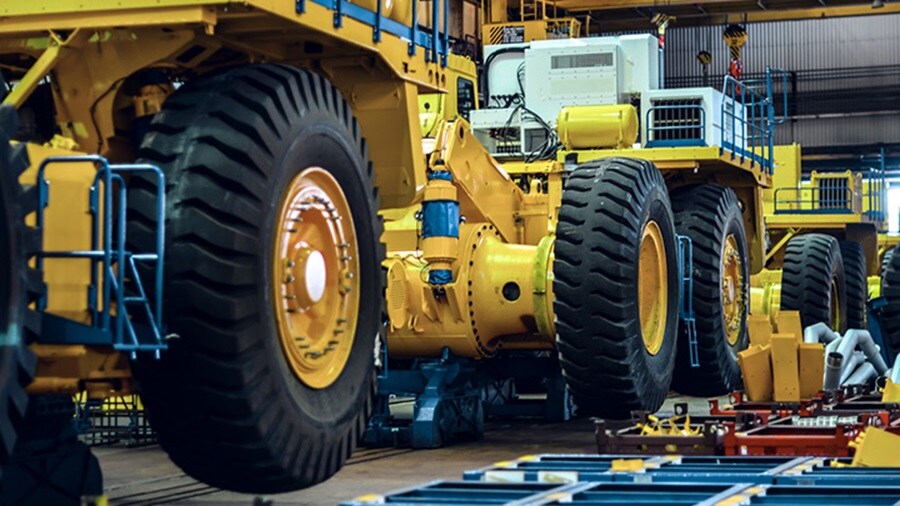Shifts in consumption patterns have become the norm in recent years – after consumers moved away from spending on services to goods during the pandemic, buying habits have recently taken a turn with a trade in goods falling by 5%. Combined with the recent disruptions along key shipping routes, trade in goods is faced with further pressures and increased costs, making the need to rethink sourcing and supply chains ever more evident.
As European businesses pivot towards near-sourcing and nearshoring strategies , destinations at the periphery of the continent's major markets emerge as potential hubs. These locations offer quicker time-to-market and streamlined management of quality, all while maintaining a competitive cost structure. As Romania, in particular, has garnered attention as a near-sourcing option, we dive into the nuances of the local market, its opportunities, and what businesses need to know before making the move.
Romania’s role in European supply chain management
A part of the European Union since 2007, Romania recently became part of the Schengen area, which resulted in lifting the country’s air and sea border controls with the rest of the Member States. As the country continues to work on lifting landside border checks, trade with its main export partners – largely other EU countries – is expected to simplify further. In the import trade, Romania’s main partners remain other EU countries, with addition of Turkey and China, a testament to the country’s importance as a connecting point between Europe and Asia.

Romania’s position between Asia and Europe, as well as its proximity to the Balkans and the Middle East, means the country can play a part in enabling the use of alternative gateways in and out of Europe, as well as serve production and consumption within Eastern Europe.
With three maritime and over 20 river ports, Port of Constanta being the largest of both, Romania has direct access to the Black Sea and could offer a shorter ocean route between Asia and Europe through the Danube river – speeding up time to market by three to four days compared to the North Sea ports.
“Our proprietary terminal in Constanta and our exclusive rail terminal in Bucharest have allowed us to create a seamless connection between the port and Romania's economic hub via rail. This not only underscores our commitment to reducing greenhouse gas emissions, but also allows us to set a new standard in logistical efficiency,” says Dragos Dumitrescu, Head of Sales in Romania and Bulgaria at Maersk.
As Romania has only recently started building on its logistics capabilities, majority of the logistics capacity is centred around Bucharest, with around 70% of the country’s modern industrial stock located around the capital. On the ocean side, the country recently announced investments in the expansion of the Port of Constanta, which will facilitate operations of large container vessels. Landside transportation will benefit from more than 3 billion Euros investment in highway infrastructure, while other logistics infrastructure recently saw development of ten new logistics parks, and new manufacturing locations for electric car batteries and car tires.
“We are seeing more and more companies looking into moving their sourcing or operations to Romania, however, to do so, significant investments and local knowledge are needed if they were to develop own capacity – so they are turning to logistics providers with local expertise and ready solutions,” explains Dumitrescu.
Romania’s economic growth
The growth of logistic capabilities and the rationale for companies relocating their operations and sourcing to Romania are greatly influenced by the highly skilled workforce in manufacturing and automotive industries. With about 20% of its workforce employed in the manufacturing sector, and an educational system where engineering, manufacturing, and construction are the second most popular field of study, Romania offers a skilled and specialized workforce in these fields. This is also evident in Romania’s main export goods, where machinery, equipment, vehicles, and appliances take the lead and continue to see an increase year-over-year.

Likewise, Romanian economy is on a steady upward trajectory, with the gross domestic product forecasted to grow by 38.47% between 2023 and 2028, reaching a peak of 485.16 billion U.S. dollars by 2028. This growth trend, marking the thirteenth consecutive year of expansion, reflects a positive GDP growth rate since 2021, which is projected to persist until 2028. Despite maintaining a trade deficit since 2012, Romania has seen a steady increase in foreign direct investment flows in a variety of projects, including both manufacturing and logistics.
These indicators, combined with the second lowest labour cost in the EU area, underscore Romania's potential as an emerging market, and present opportunities for European businesses to engage with a growing economy – so why are many companies are hesitant to make the move?
“For businesses considering outsourcing production to Romania, the primary challenge lies in decision-makers being geographically distant and missing local knowledge. This is where our role as a logistics partner becomes crucial – with our extensive local knowledge and market presence, we bridge the gap by creating tailored setups for their operations, ensuring they are always well-supported, and their concerns are addressed. The infrastructure we have established allows us to accelerate or slow down supply chains based on the specific business needs, underscoring our dedication to meet the dynamic demands of our customers and the market” concludes Dumitrescu.
Sign up to The Logistics Pulse newsletter
You did it, welcome onboard!
We're sorry, but there was a problem sending your contact request.
Please review the form fields and ensure all required information is provided correctly. If the issue persists, please contact our support team for further assistance.
Sign up to The Logistics Pulse newsletter
Receive our insights directly in your mailbox by signing up through this form and enter a world of truly integrated logistics. Get inspired by our selection of articles that help you navigate supply chains, understand industry trends, and shape your logistics strategy. You can unsubscribe anytime.
I agree to receive logistics related news and marketing updates by email, phone, messaging services (e.g. WhatsApp) and other digital platforms, including but not limited to social media (e.g., LinkedIn) from A. P. Moller-Maersk and its affiliated companies (see latest company overview). I understand that I can opt out of such Maersk communications at any time by clicking the unsubscribe link. To see how we use your personal data, please read our Privacy Notification.
By completing this form, you confirm that you agree to the use of your personal data by Maersk as described in our Privacy Notification.













